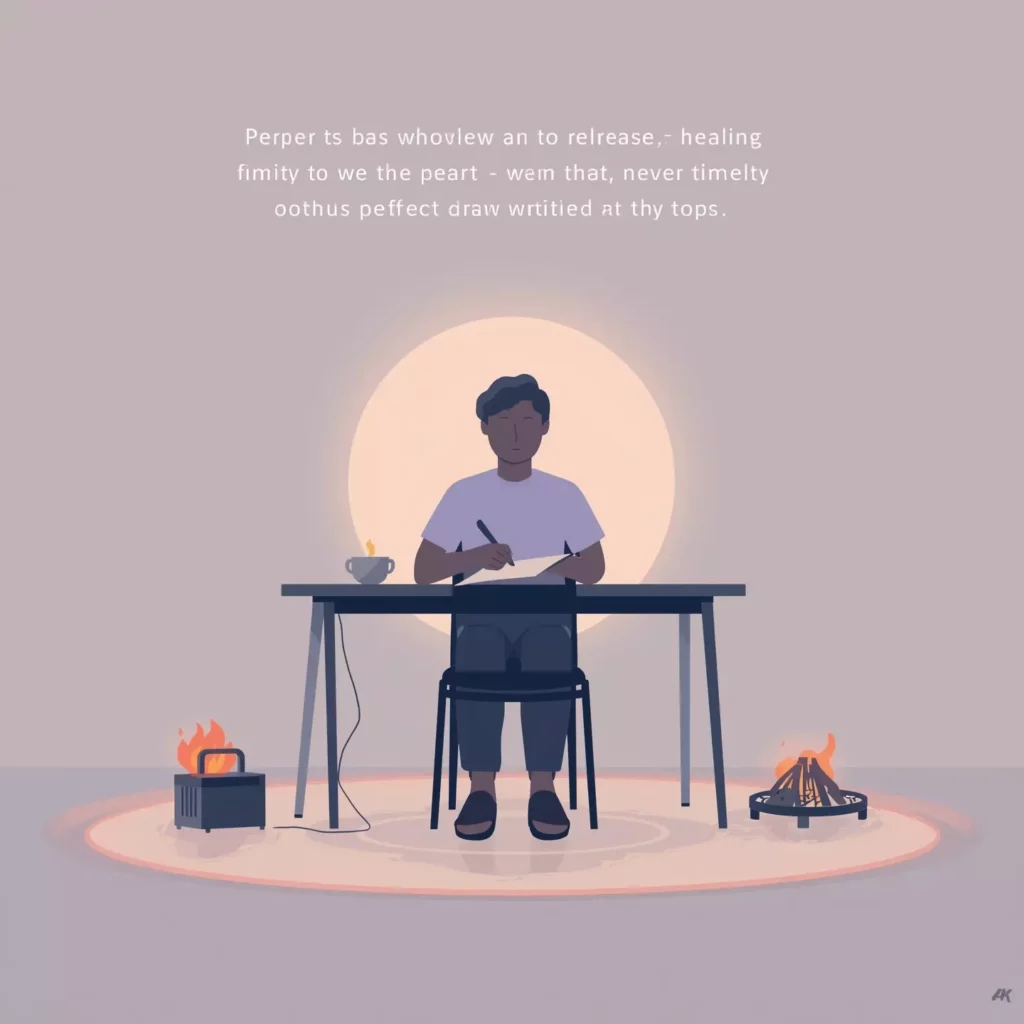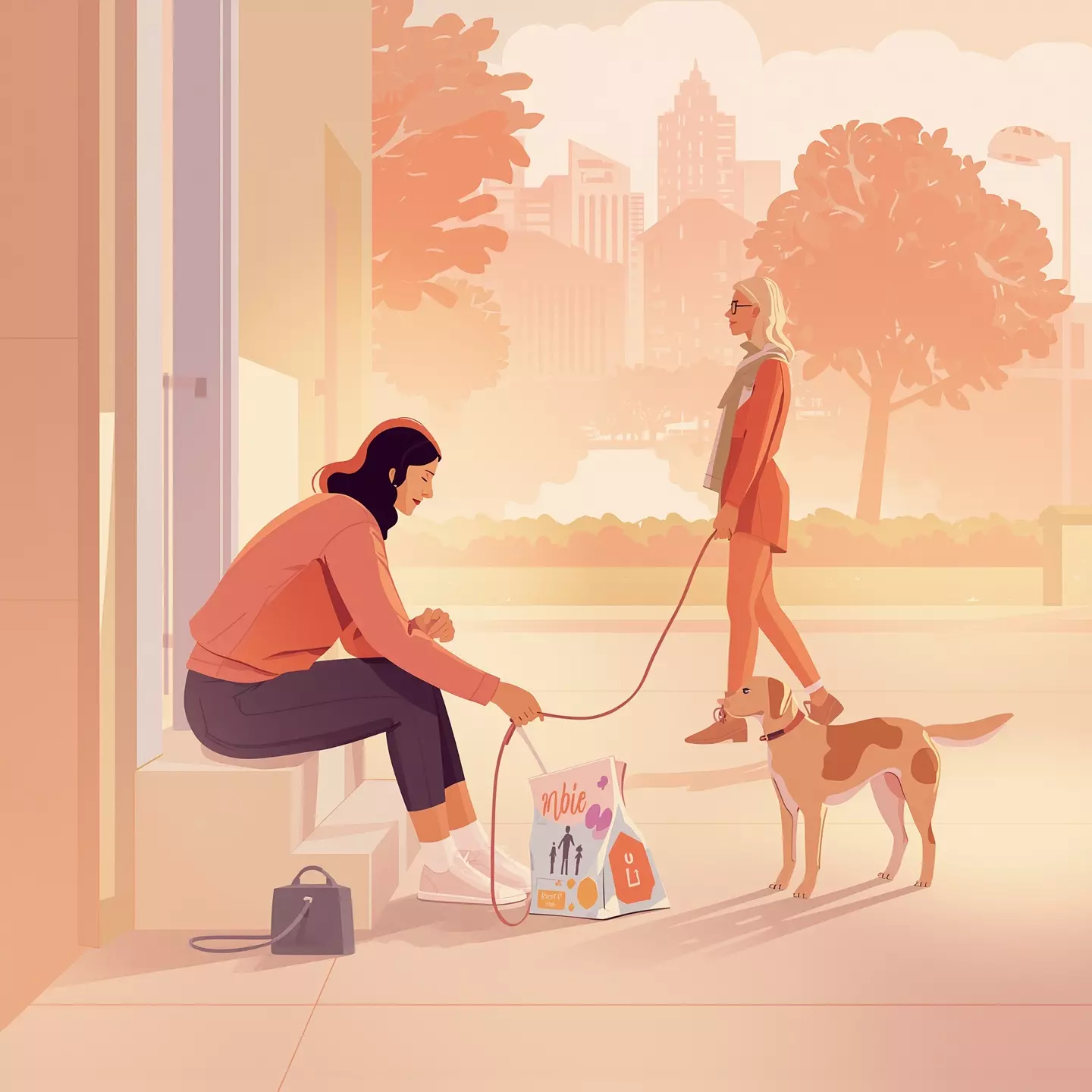Table of Contents
You can be standing in your hallway, staring at a small pile of her things—maybe a hoodie still carrying the smell of her skin, a mug you always argued over, a dog leash coiled neatly on the floor—and suddenly, the breakup feels like it just happened again. Even if you’ve gone no contact. Even if you haven’t texted. Even if you’ve been “doing better.”
Because it’s not just about the objects. It’s about how intertwined lesbian love can become. The speed at which we move in, the way we build a home, share a pet, intertwine lives until there’s no clear line between hers and yours.
And now? You have to untangle it. Not for revenge. Not for drama. But for your own damn peace.
Let’s talk about how to return belongings and handle shared-pet logistics in a way that’s kind, but not porous. Clear, but not cruel. This isn’t just “clean-up.” It’s ceremony. And you deserve one that honors both your healing and your wholeness.
Returning belongings without reopening emotional wounds
Here’s the trap: you think one last hand-off will be quick, no big deal. Maybe even sweet. But nine times out of ten, it cracks the door open just enough to let longing back in—and longing isn’t healing. It’s haunting.
- Plan one structured exchange—no multiple hand-offs
- Avoid in-person; use a neutral third party
- Use clear, logistical language only
Example script: “Your things will be with the front desk Friday. Please confirm pickup.”
You’re not being cold—you’re being careful. Research shows even online exposure to your ex delays healing. A physical hand-off? It’s an emotional ambush waiting to happen.

No Contact Isn’t a Game – It’s a Healing Strategy
Let’s examine the No Contact strategy in: Science & Psychology, Planning it, Digital Hygiene, Relapses-Cravings & Crashes, Special Cases & Exceptions… and Signs that it’s working +What comes next.
Tap here to read more →Handling shared-pet logistics without sacrificing your sanity
This one cuts deep. Especially when the pet feels like your shared child. The grief here is real. But shared-pet arrangements can prolong attachment, increase tension, and blur boundaries—especially when you’re still raw.
- Ask: Can we co-parent without emotional fallout?
- If not, prioritize routine and stability over fairness
- Communicate clearly; don’t romanticize it
Example script: “For [pet name]’s stability, I think it’s best they stay with you. I’ll transfer vet info by Friday.”

Why this isn’t just cleanup—it’s ceremony
Every bag you pack, every message you send, every leash you leave behind—it’s all part of reclaiming your boundaries. Research shows healing comes when we create meaning from the end, not when we seek endless closure talks.
You don’t need another conversation. You need a ritual of release. You’re not erasing her. You’re reclaiming you.

FAQ
Q1. What’s the best way to return my ex’s stuff without breaking no-contact?
Plan one clear, structured drop-off using a third party or secure location. Keep language short and focused solely on logistics.
Q2. How do I handle shared-pet arrangements after a breakup?
Decide what’s best for the pet’s stability. If co-parenting creates emotional setbacks, one person should take full custody. Communicate kindly but clearly.
Q3. Is it okay to stay in touch about the pet?
Only if emotional boundaries are solid and communication doesn’t become a loophole to stay connected. Otherwise, it delays healing.
Q4. Why is planning these steps considered part of healing?
Structured actions create closure and reinforce boundaries. They turn emotional chaos into rituals of release and growth.
Scientific Sources
-
Thomas C. Marshall et al. (2012): Facebook Surveillance of Former Romantic Partners
Key Finding: Even passive online contact with an ex significantly disrupts emotional recovery and prolongs psychological distress.
Why Relevant: Supports minimizing any form of contact, including digital, when planning no-contact post-breakup.
https://www.ncbi.nlm.nih.gov/pmc/articles/PMC3472530/ -
G.K. Rhoades et al. (2011): Breaking Up is Hard to Do: The Impact of Unmarried Relationship Dissolution
Key Finding: Breakups involving shared investments like pets or cohabitation lead to greater psychological distress.
Why Relevant: Validates the importance of firm boundaries and emotional clarity in handling shared-pet logistics.
https://www.ncbi.nlm.nih.gov/pmc/articles/PMC3115386/ -
Jessica Kansky & Joseph P. Allen (2018): Making Sense and Moving On: The Potential for Individual and Interpersonal Growth Following Emerging Adult Breakups
Key Finding: Breakups can foster growth and better future relationships when individuals understand the end and create meaning.
Why Relevant: Returning belongings and closing chapters are part of the healing and identity reconstruction process.
https://journals.sagepub.com/doi/full/10.1177/2167696818756481
- The Ultimate Breakup Checklist: How to Cancel Stuff, Subscriptions & Keys Without Heartache

- Breakup Checklist for Peace: Cancel Subscriptions, Return Keys & Reclaim Space

- The Powerful Goodbye Letter You Never Send: A Healing Ritual for Breakup Closure

- Queer Healing Power: How to Write a Values-Based No Contact Declaration That Sticks

- Empowered & Protected: No Contact Safety Plan for Transgender People (Documents, Teams, Names)

- Lesbian Women: Returning belongings & shared-pet logistics kindly but firmly

- Gay Men’s Brilliant Exit Plan: A Peaceful No Contact After Gay Breakup Guide

- Women’s Ultimate No Contact Plan: Heal Faster with These Proven Scripts & Strategies

- Men: Powerful 24-Hour No Contact Strategy to Heal Fast


Leave a Reply